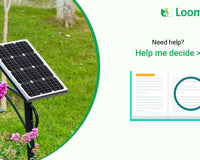Bifacial solar panels are the latest technology solar panel which generate electricity from both side of panels – front & back side. The solar cell construction of this solar panel is different from polycrystalline and monocrystalline solar panel. They offer many advanatges over traditional solar panels. These can be framed or frameless solar panels.
Bifacial solar panels use two faces instead of one to absorb solar energy and generate power. Solar panels do not have the normal aluminium backing but instead use glass to absorb the sunlight reflected from the ground or rooftop. This increases the energy generated from solar panels by at least 5% but it can be much more depending on the orientation of the solar panels. The glass used on both sides of the solar panels also increases the reliability and robustness of the solar panels.
Video: https://www.youtube.com/watch?v=L7-Drm5_Xfk
When sun light falls on properly mounted solar panels, they absorb approximately 90% of the sun light, and 10% is reflected and goes into back surface. Electricity is generated after heat energy is converted into electrical energy. The mounting system can affect the performance of the bifacial modules. The higher a bifacial solar panel is tilted, the more power it produces.
When the reflected sun light reflection goes on back side of solar panel, it generates electricity up to 25% from back side. For example, if we install Shark 440W bifacial solar panel, then it generates approximately 530W. Loom Solar’s Shark bifacial 440W solar panel comes with 144 cells and 9 busbar technology. These panels are more efficient, durable, UV resistant, and will hence use less space. Many industry experts believe bifacial panels are the future of the industry and will play a valuable role in realizing lower LCOE.











